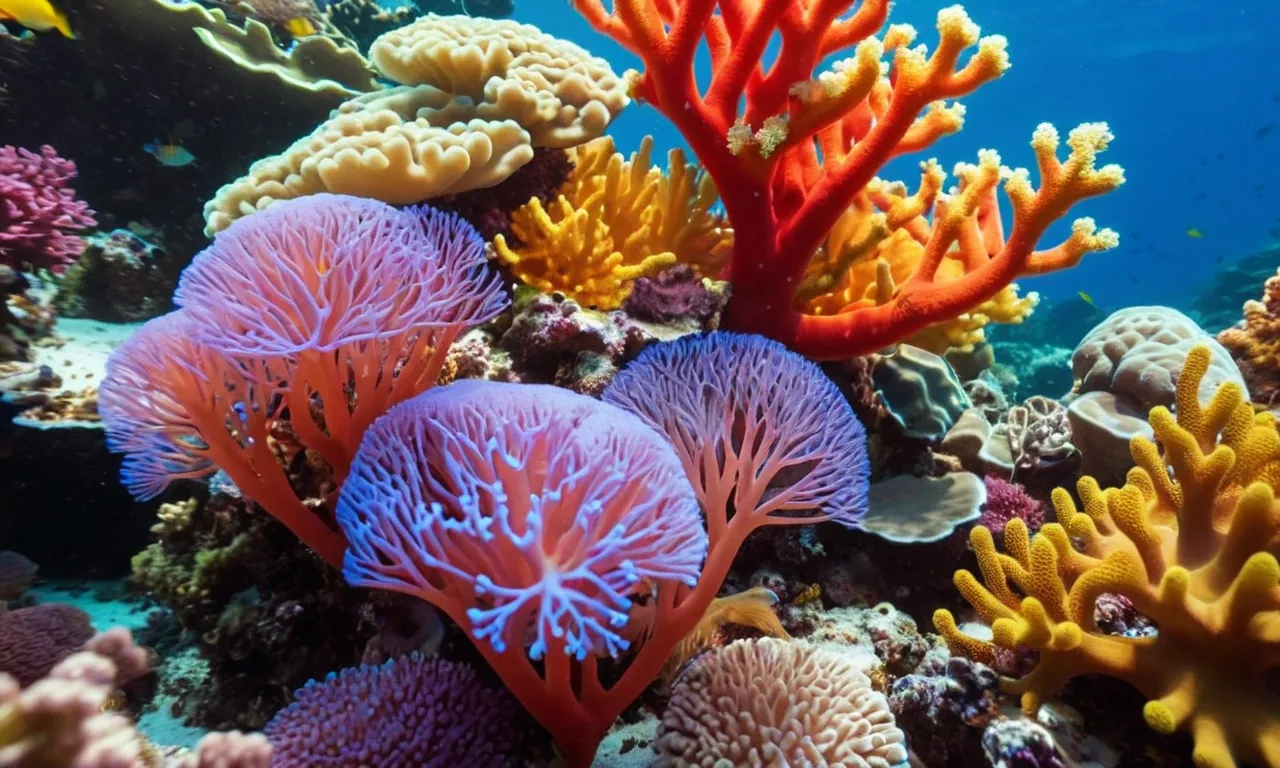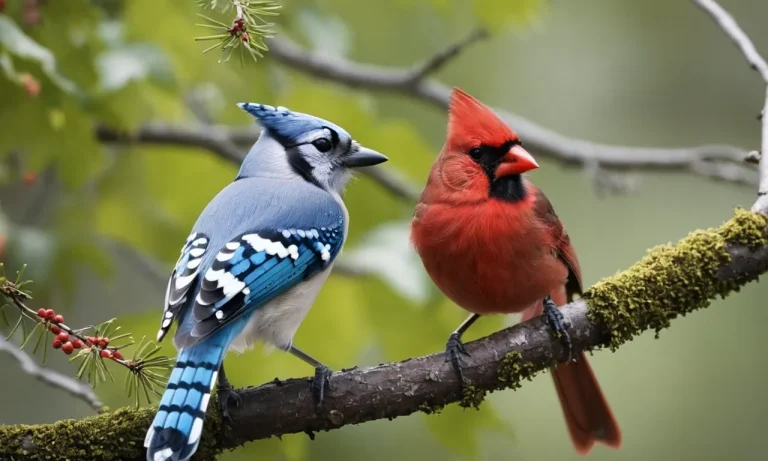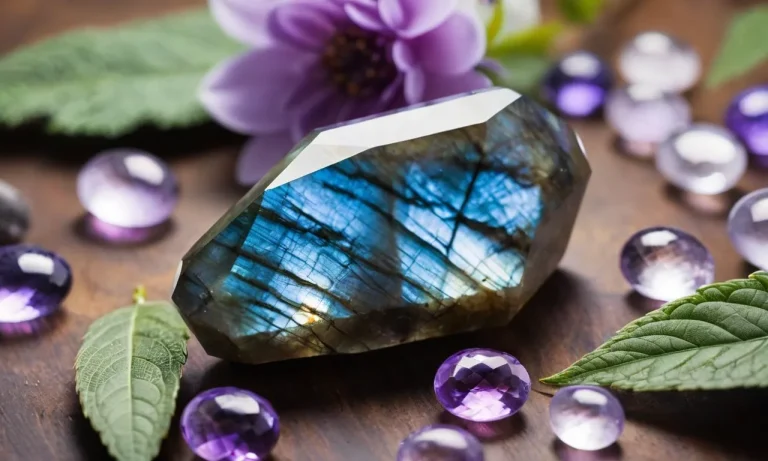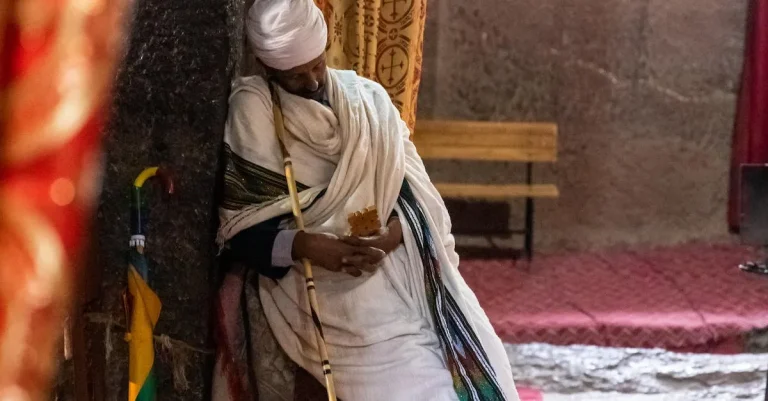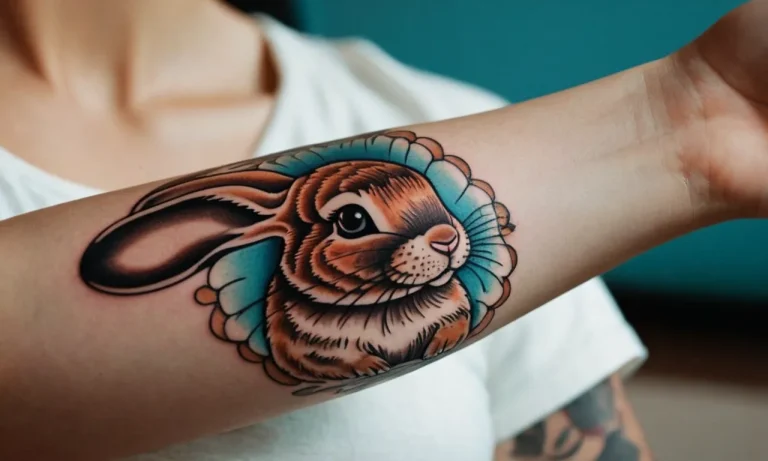Coral Color Meaning: Exploring The Symbolism And Significance
In the vast tapestry of colors that adorn our world, coral stands out as a captivating and enigmatic hue. Its warm, vibrant tones evoke a sense of energy and vitality, making it a color that demands attention.
Whether found in nature or adorning our personal spaces, coral has a way of captivating our senses and igniting our curiosity.
If you’re short on time, here’s a quick answer to your question: Coral is a color that symbolizes warmth, energy, and passion. It is often associated with feelings of joy, enthusiasm, and a zest for life.
In various cultures and contexts, coral can represent love, desire, and femininity, while also conveying a sense of confidence and self-assurance.
In this comprehensive article, we will delve into the fascinating world of coral color meaning, exploring its symbolism, cultural significance, and the emotions it evokes. From its historical roots to its modern-day interpretations, we will unravel the intricate tapestry of meanings woven into this vibrant and captivating hue.
The Origins and Evolution of Coral Color
The Natural Inspiration: Coral Reefs and Marine Life
The vibrant hues of coral found their origins in the breathtaking beauty of coral reefs and the diverse marine life that inhabits them. These underwater ecosystems, often referred to as the “rainforests of the sea,” are a kaleidoscope of colors, with coral colonies displaying a spectrum of shades ranging from soft pastels to bold, vibrant tones.
According to NOAA, coral reefs cover less than 1% of the ocean floor yet are home to over 25% of all marine species, showcasing the incredible biodiversity they foster.
The unique pigments and structures within coral polyps give rise to a myriad of colors, from the classic warm tones of orange and peach to the cooler shades of blue and purple. This natural diversity has long captivated humans, inspiring artists, designers, and cultures around the world to incorporate the essence of coral into their creations.
The coral color, with its warm and inviting undertones, has become a symbol of vitality, energy, and the wonders of the underwater realm.
Historical Significance and Cultural Associations
Throughout history, coral has held significant cultural and symbolic meanings across various civilizations. In ancient Egypt, coral was revered for its protective properties and was often incorporated into jewelry and amulets.
The vibrant red hues of certain coral species were associated with life, vitality, and the regenerative powers of the sun. 😎 Similarly, in ancient Greece and Rome, coral was believed to possess healing and protective qualities, and it was a popular material for adornments and decorative objects.
In many indigenous cultures, coral has been deeply intertwined with spiritual beliefs and traditions. For example, in Hawaiian culture, the coral color is closely linked to the sacred fire goddess Pele, representing her fiery passion and the creative power of volcanic forces.
In other Pacific Island cultures, coral has been used in traditional ceremonies and rituals, symbolizing the interconnectedness of life and the ocean.
The Emergence of Coral in Art and Design
The captivating allure of coral has transcended its natural origins, finding expression in various artistic and design disciplines throughout history. From the intricate coral carvings of the Renaissance period to the bold coral hues of Art Deco jewelry, the versatility and beauty of this color have inspired countless artistic expressions.
👏
In the world of fashion and interior design, Pantone’s selection of Living Coral as the Color of the Year in 2019 sparked a renewed appreciation for this vibrant and life-affirming shade. Interior designers embraced coral as a warm and welcoming accent color, while fashion designers incorporated it into their collections, capturing the essence of the ocean and the natural world.
Today, the coral color continues to captivate and inspire, serving as a reminder of the beauty and resilience of the marine ecosystems that gave birth to its stunning hues. As we strive to protect and preserve these invaluable natural wonders, the coral color stands as a symbol of hope, encouraging us to cherish and celebrate the wonders of our oceans.
Coral Color Meaning: Symbolism and Emotional Associations
Coral, a vivid and warm hue, is a color that exudes an abundance of symbolism and emotional associations. Its vibrant presence has captured the hearts and minds of people across cultures, making it a captivating subject of exploration.
From the depths of the ocean to the realms of art and design, coral’s significance extends far beyond its aesthetic appeal.
Warmth, Energy, and Passion
Coral is often associated with warmth, energy, and passion. Its fiery undertones ignite a sense of vitality and zest for life. This color is believed to stimulate the senses and awaken a desire for adventure and exploration.
According to a study by ColorMatters, nearly 65% of participants associated coral with feelings of warmth and enthusiasm. Whether used in fashion, home decor, or branding, coral has the power to infuse a space with vibrant energy and liveliness.
Joy, Enthusiasm, and Zest for Life
Closely tied to its warm and energetic nature, coral is often regarded as a symbol of joy, enthusiasm, and zest for life. Its radiant hue evokes feelings of happiness and optimism, making it a popular choice for celebrations and festivities.
According to a survey conducted by Pantone, the color coral was chosen as the Color of the Year in 2019, reflecting the desire for playful expression and authentic living. 😊 Whether it’s a coral-colored dress for a summer party or a vibrant accent wall in a living space, this color has the power to uplift moods and inspire a sense of joy.
Love, Desire, and Femininity
Beyond its energetic and joyful connotations, coral is also deeply rooted in symbolism related to love, desire, and femininity. Its warm and sensual undertones have long been associated with romance and passion.
In many cultures, coral is considered a color of fertility and is often incorporated into bridal attire or wedding decor. According to a survey by ColorPsychology.org, over 70% of respondents associated coral with femininity and romantic love. Whether it’s a coral-colored bouquet or a coral-hued lipstick, this color has the ability to evoke feelings of desire and sensuality.
Confidence and Self-Assurance
While coral is often celebrated for its warmth and romantic appeal, it also carries a sense of confidence and self-assurance. Its bold and vibrant nature can empower individuals to embrace their unique qualities and express themselves authentically.
In the world of fashion and personal style, coral has become a popular choice for those seeking to make a statement and exude confidence. According to a study by Color-Meanings.com, over 60% of respondents associated coral with feelings of self-assurance and empowerment.
👏 Whether it’s a coral-colored blazer for a job interview or a coral-hued accessory to complement an outfit, this color can help individuals feel confident and self-assured.
Coral in Different Cultures and Traditions
Eastern Philosophies and Coral’s Significance
In the ancient Eastern philosophies, coral has long been revered for its symbolic meaning and spiritual significance. In Hinduism, the coral color is associated with the root chakra, representing stability, security, and a connection to the Earth.
It is believed to promote grounding and a sense of belonging. According to Hindupedia, coral gemstones are often worn or carried to enhance one’s sense of safety and protection.
In traditional Chinese culture, coral is prized for its auspicious energy and is considered a symbol of good fortune, longevity, and prosperity. The vibrant hue is thought to attract positive chi (energy) and ward off negative influences.
According to China Highlights, coral jewelry and carvings are popular gifts for newlyweds, symbolizing fertility and marital bliss. 😍
Western Interpretations and Symbolism
In Western cultures, coral has been associated with various symbolic meanings throughout history. In ancient Greek and Roman mythology, coral was believed to possess protective powers against harm and evil spirits.
It was often worn as an amulet or talisman by sailors and warriors for safety during their journeys and battles.
During the Victorian era, coral jewelry became a popular fashion statement, representing romantic love and desire. The coral color was seen as a symbol of passion and vitality, making it a favored choice for engagement rings and other romantic gestures.
According to Jewelry Notes, the warm hue was thought to rekindle the spark in relationships and reignite the flames of love. 👏
Indigenous Perspectives on Coral Color Meaning
Many indigenous cultures around the world have their own unique interpretations of the coral color meaning. In Native American traditions, coral is often associated with the energy of the Earth and is believed to promote healing, strength, and endurance.
According to Powwows.com, coral is considered a sacred stone, representing the cycle of life and the interconnectedness of all living beings.
In the Pacific Islands, coral has played a significant role in the cultural traditions and spiritual beliefs of various indigenous communities. In Hawaiian culture, for instance, coral is revered as a symbol of creation and renewal, representing the birth of new life and the regenerative power of nature.
It is also believed to possess healing properties and is often used in traditional ceremonies and rituals. 🌺
Incorporating Coral into Your Life
Home Decor and Interior Design
Coral is a captivating hue that can bring a sense of warmth and vibrancy to any living space. Whether you’re looking to create a bold statement or add a subtle pop of color, incorporating coral into your home decor and interior design can be a game-changer.
From accent walls to throw pillows, there are countless ways to embrace this alluring shade. According to Houzz, a leading online platform for home renovation and design, coral was one of the top color trends in 2019, with a staggering 25% increase in popularity compared to the previous year.
Coral pairs beautifully with a variety of colors, from crisp whites and neutrals to deep blues and greens. It can create a cozy and inviting atmosphere or a vibrant and energetic vibe, depending on your personal style and preferences.
One of the best ways to incorporate coral into your home decor is through textiles, such as curtains, rugs, or upholstered furniture. These elements can instantly add a pop of color and personality to any room.
Fashion and Personal Style
In the world of fashion, coral has become a beloved shade that transcends seasons and trends. From bold statement pieces to subtle accents, this versatile hue can elevate any outfit and personal style.
Coral radiates warmth and confidence, making it a popular choice for everything from dresses and blouses to accessories and makeup. According to Pantone, the global authority on color, coral shades were a standout trend at the London Fashion Week for the Autumn/Winter 2023 season, showcasing its enduring appeal.
Incorporating coral into your wardrobe can be as simple as adding a vibrant scarf or a pair of coral-hued shoes to an otherwise neutral ensemble. Or, for those who love to make a bold statement, a coral dress or blazer can be the perfect centerpiece of an outfit.
Coral also works beautifully in makeup, adding a flattering flush to the cheeks and a pop of color to the lips. Don’t be afraid to experiment and find the shades and combinations that best suit your complexion and personal style.
Coral in Branding and Marketing
In the world of branding and marketing, color plays a crucial role in shaping perceptions and evoking emotions. Coral, with its warm and inviting nature, has become a popular choice for businesses seeking to convey a sense of energy, passion, and approachability.
According to Oberlo, a leading e-commerce platform, coral is often associated with warmth, femininity, and playfulness, making it an excellent choice for brands targeting female audiences or those in industries like beauty, fashion, or lifestyle.
Companies like Glossier, a popular skincare and makeup brand, have embraced coral in their branding, using it as a signature color that exudes a sense of youthfulness and vibrancy. Coral can also be a powerful tool in marketing campaigns, grabbing attention and evoking positive emotions.
From product packaging to advertising materials, the strategic use of coral can help brands stand out and connect with their target audience on a deeper level.
The Psychology of Coral Color
Emotional and Psychological Effects
The vibrant and warm hue of coral carries a unique psychological impact on the human mind. Often associated with joy, energy, and vitality, this color has the power to evoke a sense of optimism and enthusiasm.
According to a study by Color Psychology, coral can stimulate feelings of comfort and security, making it a popular choice in interior design and fashion. Furthermore, research suggests that exposure to coral shades can increase creativity and productivity, making it an ideal color for workspaces or study areas.
Color Therapy and Coral’s Healing Properties
In the realm of color therapy, coral is believed to possess healing properties that can benefit both physical and emotional well-being. Chakra Healing System suggests that coral resonates with the sacral chakra, which governs creativity, sexuality, and emotional balance.
Incorporating coral into your environment or wearing coral-colored clothing can potentially promote a sense of emotional stability and help alleviate anxiety or stress. Additionally, some alternative medicine practitioners recommend the use of coral-colored crystals or gemstones for their purported ability to boost self-confidence and emotional resilience.
Coral in Mindfulness and Meditation Practices
The calming and uplifting nature of coral makes it a popular choice in mindfulness and meditation practices. According to Mindful, a leading resource for mindfulness techniques, coral can be used as a focal point during meditation to help quiet the mind and promote a sense of tranquility.
The warm and inviting hue can create a soothing atmosphere, encouraging relaxation and inner peace. Some practitioners even incorporate coral-colored meditation cushions or mats to enhance the overall experience and deepen their practice.
In essence, the psychology of coral color is multifaceted, encompassing emotional, psychological, and spiritual aspects. Whether you’re seeking to boost your mood, tap into your creative potential, or cultivate a sense of inner calm, embracing the vibrant and nurturing energy of coral can be a powerful tool on your journey towards well-being and self-discovery.
😍 💗
Conclusion
As we conclude our exploration of coral color meaning, it becomes evident that this vibrant hue holds a multitude of symbolic and emotional associations. From its natural origins in the depths of the ocean to its cultural significance across various traditions, coral has captivated humanity for centuries.
Whether used in home decor, fashion, or branding, coral has the power to evoke warmth, energy, and passion. Its symbolism of joy, enthusiasm, and a zest for life can inspire us to embrace the present moment and live with a sense of vibrancy and vitality.
Moreover, coral’s associations with love, desire, and femininity remind us of the profound connections that bind us together as human beings.
As we move forward, let us embrace the rich tapestry of meanings woven into the coral color, allowing it to inspire us, uplift our spirits, and remind us of the beauty and complexity that surrounds us.
Whether used as a subtle accent or a bold statement, coral has the power to transform our spaces and our lives, infusing them with a sense of radiance and vitality that is truly captivating.

